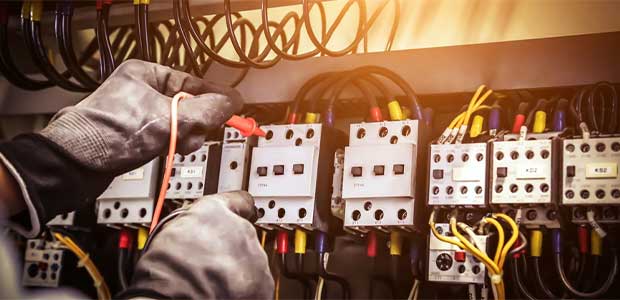
Why Considering Yourself a “Qualified Person” Might Not Keep You Safe
Not all definitions for “qualified” are the same.
- By Steve Crocker
- Sep 01, 2022
According to the Center for Construction Research and Training, contact with live electrical parts kills 143 construction workers annually making it the number two killer on construction sites behind falls. The risk of electrocution on the job site is so significant that it warrants a spot on OSHA’s Fatal Four initiative which warns of the leading causes of workplace deaths in the construction industry. Given all the advancements in electrical safety technology, why do we continue to see such a high number of deaths from electricity?
Perhaps it’s time to take a closer look at the language the industry uses regarding the roles and responsibilities for electrical safety and training. How many times have you heard the word “qualified person” and wondered if that was enough to keep you, your co-workers or your job site safe?
As any veteran electrician can attest, the term “qualified” is thrown around quite a bit to describe how certain employees are trained and ready to address electrical scenarios on the job. And yet, not all qualified definitions are created equal, which may mean workers are getting too close to live electrical components under the guise that they are “qualified” to proceed.
For example, the word “qualified” is articulated differently in NFPA 70E (a standard for electrical safety in the workplace) compared to how it is used in other OSHA standards. According to NFPA 70E, a “qualified person is one who has demonstrated skills and knowledge related to the construction and operation of electrical equipment and installations and has received safety training to identify the hazards and reduce the associated risk.” Unlike the OSHA definition of “qualified,” the NFPA 70E definition explicitly calls for the individual to have received safety training specific to the electrical hazards they may face.
In addition to requiring safety training for all qualified persons, NFPA 70E also states that only “qualified persons” can cross the Restricted Approach Boundary into the area where the risk for electrical shock or electrocution is highest. The employee would be expected to have a level of training and PPE commensurate with the hazard to help them work safely. This becomes problematic as those who are named “qualified” under OSHA’s broad definition may not be so under NFPA 70E and yet assume they are or perhaps feel their “qualified” status forces them to proceed with the job regardless.
While it may be a bit until we can work under a unified definition, there are things you can do in the meantime to help reduce the risk of electrocution. Here are five tips to consider for your job site:
One electrical safety class is not enough. Just as it takes more than an understanding of electrical equipment and installations to be considered a qualified person by NFPA 70E’s definition, an electrical safety training class alone won’t do the trick either. Classes advertised as “Qualified Person Training” should be taken with the understanding that course completion alone may not be enough to attain that designation.
Clarify “qualified” with your employer. This is a distinction that may be the most important. It is not the instructor of the electrical safety training course that designates you as a qualified person, but rather, your employer. You may be qualified to work on certain pieces of electrical equipment and not others depending on your employer’s training program. Get clarification to ensure you understand which scenarios are safe given your training and identify where you need further instruction for the installation and operation of a given electrical system.
Make sure a shock and arc risk assessment are in place. Electrical workers face many dangers on the job, but few are more devastating than an arc flash. This electrical release of energy can be hotter than the surface of the sun, producing an explosion with the force of eight sticks of dynamite. Before starting to address the issue on the job site, be sure to conduct a risk assessment for both arc flash and shock dangers. This process should identify the level of risk at a given site, appropriate mitigation measures and specific recommendations for how to keep workers safe.
Labeling is critical. All equipment must be labelled appropriately. You may not always know where an arc flash can occur, so labeling equipment with proper warning signs and instructions reduces risk. Clear markings will help to easily identify potential danger zones and prepare workers for a plan of action should an incident occur.
Have the right attire for the work being done. Proper arc rated clothing is your best form of protection when performing live electrical work. Make sure your clothing rating is commensurate with the hazard category associated with the equipment you will be working on or near. Without the proper attire—such as hearing protection, face shields and leather footwear—your risks are higher for serious injuries. Before approaching electrical equipment and installations, make sure you have the right PPE for the job.
Job sites come with inherent safety risks. By understanding what it truly means to be a qualified person with your employer, workers can approach each situation with the right electrical training, tools and gear to keep them safe.
This article originally appeared in the September 1, 2022 issue of Occupational Health & Safety.